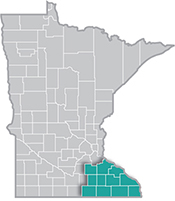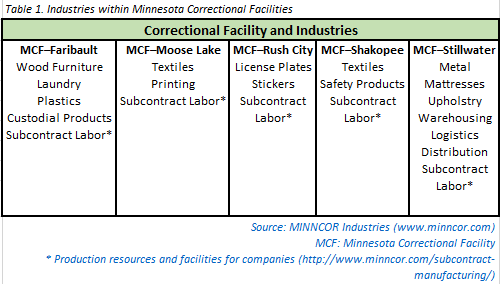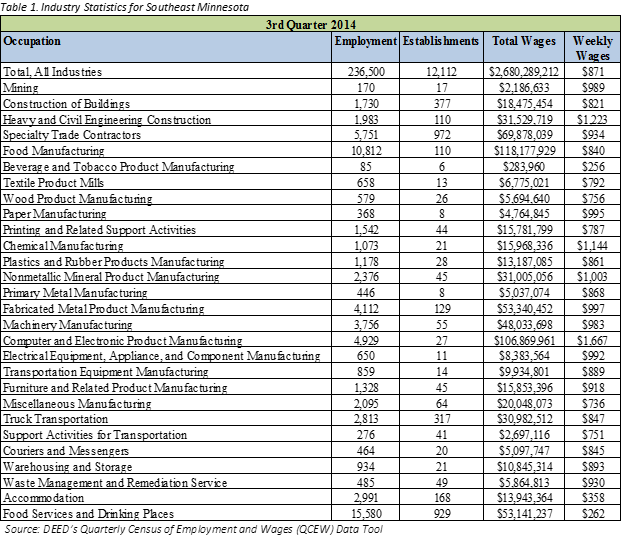 Southeast Minnesota is a health care and agricultural powerhouse. The region is home to the renowned Mayo Clinic and some of the world's most recognized food companies and brands.
Southeast Minnesota is a health care and agricultural powerhouse. The region is home to the renowned Mayo Clinic and some of the world's most recognized food companies and brands.
Advanced manufacturing is especially strong here, with machinery, chemicals, and electronics among the top products.
Want the freshest data delivered by email? Subscribe to our regional newsletters.
6/18/2015 2:23:55 PM
As many service providers know, working with special populations presents a host of challenges. When assisting individuals who have been incarcerated, service providers face unique challenges, including potential gaps in employment history while incarcerated and fear that legitimate jobs will be scarce and unattainable upon release (and, depending on the nature of an offense, some jobs will be off-limits). Those who have served time may feel hopeless and, subsequently, come in with little motivation to try.
All is not as bleak as these individuals may initially think, though, as many of them may have worked while incarcerated, including jobs in prison industries (MINNCOR), food service, barbering, tutoring, and as a "swamper" (janitor), just to name a handful. Some come out of prison feeling that their employment while incarcerated is not seen as legitimate; but work history IS work history, and is not confined to that outside prison walls.
Most of the correctional facilities within the Minnesota Department of Corrections have specific industries that allow residents to earn money, but more importantly allow them to gain valuable work experience that they can take with them and discuss with an employer. As seen in table 1, there are many skilled jobs in various industries that inmates in correctional facilities can do.

Once individuals realize that all of the jobs available to them while incarcerated also exist in mainstream society and the skills they attained while working in prison are applicable, they can leave confinement knowing they are a skilled worker with much to offer an employer.
Using DEED's JobSTAT tool, a jobseeker can enter the occupation(s) they have experience in and find similar occupations, opening up more opportunities for them post-release. For example, the top three job matches for an individual who worked as a cutter/trimmer (hand) are shown in table 2. Notice that the top three related occupations using those skills are in high demand in Southeast Minnesota!

While some jobs will be unattainable depending on the type of offense, there are many industries that would hire individuals with criminal backgrounds in Southeast Minnesota, as seen in Table 3. While this is far from a comprehensive list, it offers a brighter outlook for those who have spent time incarcerated. Almost half of these industries pay more than the average wage across all industries, and many of them have a large number of job openings. Although some industries - such as accommodation and food services - have lower wages, some jobs in these industries are characterized by part-time and seasonal work and could easily be a second job for supplemental income.

Michelle Smith, the warden at MCF-Oak Park Heights, talked about hearing from a former resident that found a good job. "One got his welding certification (in prison) and it only took him two weeks to get a job, full-time employment," she stated. "He said 'Tell the guys there are jobs out here, and to hang in there'."
Contact Mark Schultz. Mark was previously a job counselor who worked with ex-offenders.